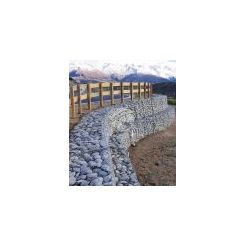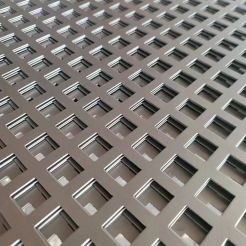Tungsten Carbide Button Bits
JIMS CARBIDE is one of the premier cemented carbide manufacturing companies. It is a long-term partner supplying world class carbide compacts used in hard rock mining bits, DTH hammer bits, O&G roller cone bits, polycrystalline diamond substrates, and conical picks.
Product Description
JIMS CARBIDE is one of the premier carbide manufacturing companies. We offer world class carbide miling for hard rock mining bits, DTH hammer bits, O&G roller cone bits, polycrystalline diamond substrates and cone picks.
Through years of technical improvements and equipment optimization, JIMS CARBIDE has developed the GM, KM and JCK series carbide grades with an annual production capacity of over 800 metric tons/year.
In a wide range of geological formations, JIMS CARBIDE has proven to be a strong performer against competitors around the world. As a result of our consistently high quality standards, JIMS CARBIDE has received several certified supplier awards from internationally recognized companies.
Carbide Grades
| Grade | Co(%) | Hardness [HRA) |
TRS (Nmm) |
Recommended Use |
| GM06 | 6 | 90.3 | 2800 | DTH hammer,medium to hard rock |
| KM65 | 6.5 | 90 | 3000 | |
| GM08 | 8 | 88.7 | 3200 | |
| J510 | 10 | 88.1 | 3300 | Roller cone dril bit |
| J411 | 11 | 88.8 | 3200 | |
| J512 | 12 | 87.3 | 3200 | |
| JCK 1 | 10 | 85.7 | 2400 | Road milling,mining |
| JCK 3-S | 6.5 | 87.5 | 2200 | |
| YH13 | 13 | 88.7 | 3500 | PDC Substrate |
| YH16 | 16 | 86.6 | 3200 |

| Type | Dimensions(mm) | ||||
| D | H | h | R | e | |
| Q0810 | 8 | 10 | 7.1 | 4.2 | 1 |
| Q0812 | 8 | 12 | 9.1 | 4.2 | 1.0 |
| Q1010 | 10 | 10 | 6.3 | 5.2 | 1.5 |
| Q1012 | 10 | 12 | 8.3 | 5.2 | 1.5 |
| Q1014 | 10 | 14 | 10.3 | 5.2 | 1.5 |
| Q1214 | 12 | 14 | 9.4 | 6.2 | 1.5 |
| Q1216 | 12 | 16 | 11.4 | 6.2 | 1.5 |
| Q1218 | 12 | 18 | 13.4 | 6.2 | 1.5 |
| Q1416 | 14 | 16 | 10.5 | 6.2 | 1.5 |
| Q1422 | 14 | 22 | 16.5 | 7.2 | 1.5 |
| Q1625 | 16 | 25 | 18.6 | 8.2 | 1.5 |
| Q1827 | 18 | 27 | 19.8 | 9.2 | 1.5 |
Tungsten Carbide Bits/Button/Drill Bits
Tungsten carbide button bits are drilling tools used in the mining and construction industries for drilling through hard rock formations. They are made of a composite material consisting of tungsten carbide grains, which are cemented together with a metallic binder such as cobalt or nickel. The resulting material is extremely hard and wear-resistant, making it ideal for use in drilling applications.
The button bits themselves consist of a bit body and a series of tungsten carbide buttons arranged in a specific pattern on the face of the bit. The buttons are the primary cutting elements and are designed to fracture the rock as the bit is rotated and forced into the formation.
There are several different types of tungsten carbide button bits, each designed for specific drilling applications. For example, conical button bits have a tapered shape and are ideal for drilling in soft to medium-hard formations, while chisel bits have a flat shape and are used for drilling in harder formations.
The design and arrangement of the tungsten carbide buttons on the bit face can also vary depending on the specific drilling application. For example, cross-shaped button arrangements are commonly used for drilling in harder formations, while dome-shaped button arrangements are used for drilling in softer formations.
Tungsten carbide button bits are typically used in conjunction with rotary drilling equipment, which provides the rotational force needed to turn the bit and penetrate the rock formation. The bit is attached to the end of a drill string and lowered into the borehole, where it is rotated at high speed while being pushed into the formation. As the buttons on the bit face make contact with the rock, they fracture it into small pieces, which are then removed from the borehole by a drilling fluid such as mud or air.
Tungsten carbide button bits are essential tools for drilling through hard rock formations in mining and construction applications. They are made of a composite material consisting of tungsten carbide grains and a metallic binder, and feature tungsten carbide buttons arranged in a specific pattern on the bit face for efficient rock penetration.
Production Process
 |
 |
|
①Powder |
②Milling |
 |
 |
|
③Spray drying |
④Pressing |
 |
 |
|
⑤Sinter-HIP |
⑥Processing |
 |
 |
|
⑦Checking |
⑧Finished |
Note: Can offer customized product based on customer requirements.










